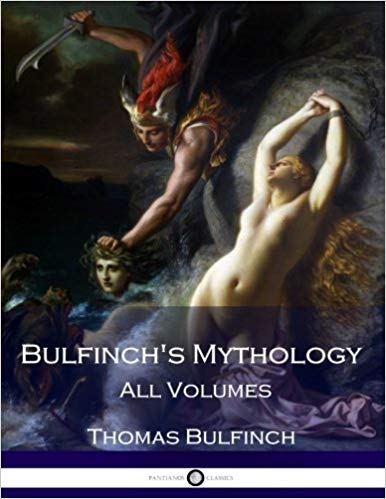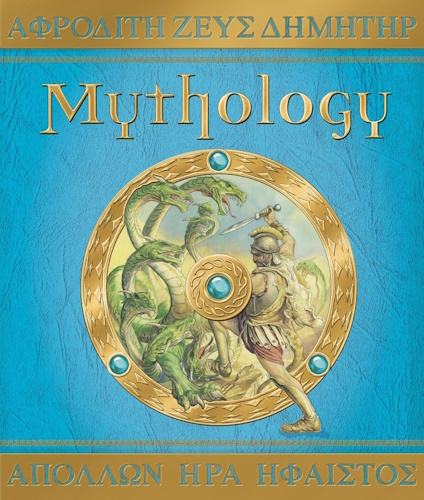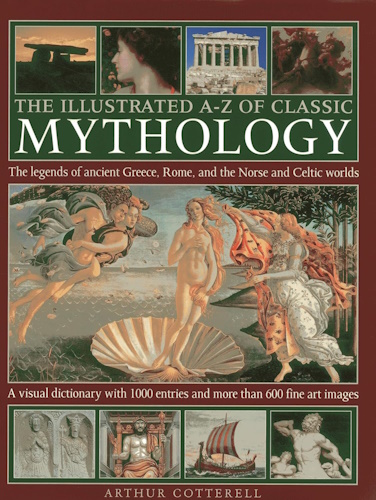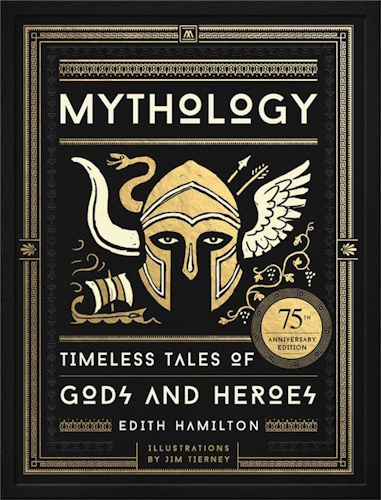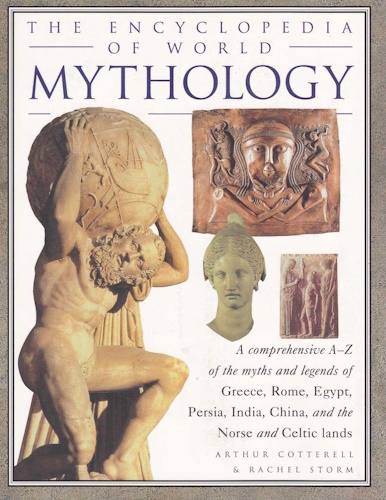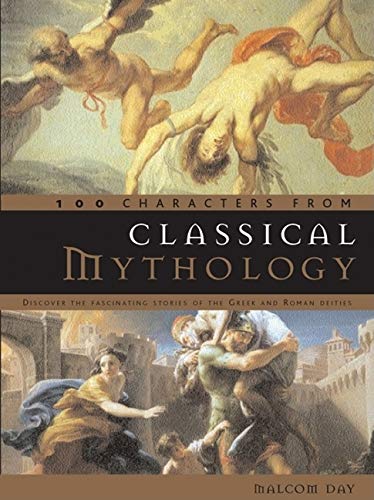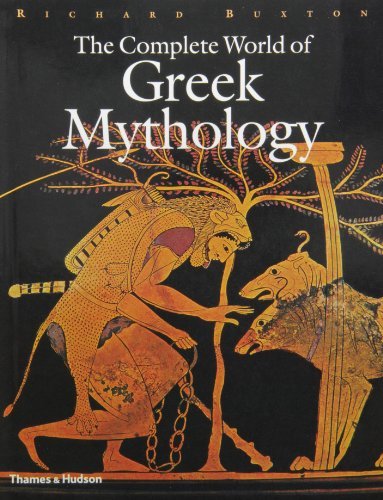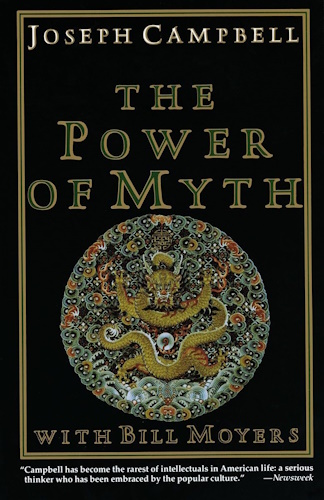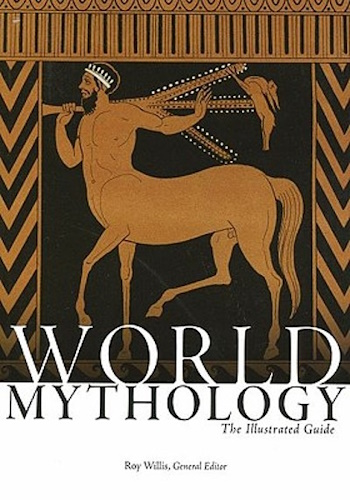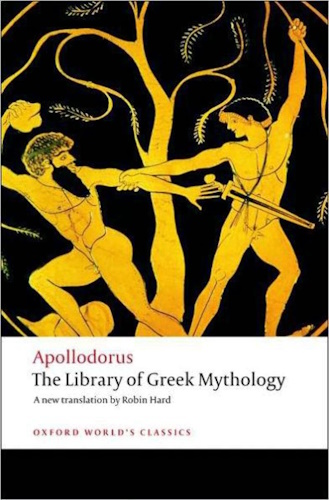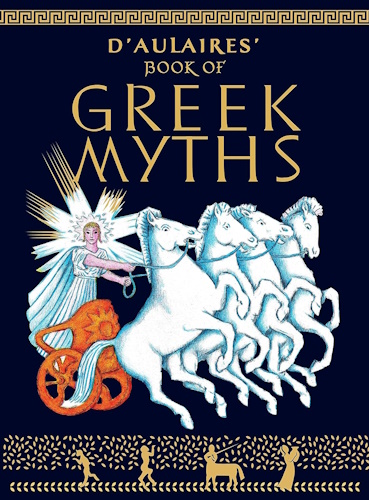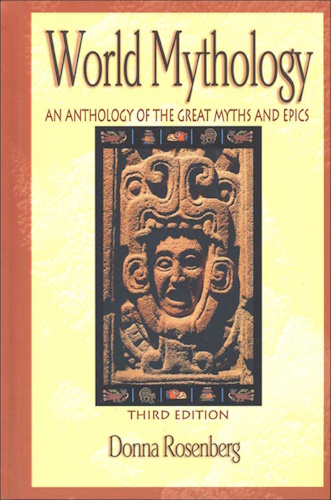
![]()
![]()
CHAPTER XXXVIII.
NORTHERN MYTHOLOGY- VALHALLA- THE VALKYRIOR.
NORTHERN MYTHOLOGY.
THE stories which have engaged our attention thus far relate to the mythology of southern regions. But there is another branch of ancient superstitions which ought not to be entirely overlooked, especially as it belongs to the nations from which we, through our English ancestors, derive our origin. It is that of the northern nations, called Scandinavians, who inhabited the countries now known as Sweden, Denmark, Norway, and Iceland. These mythological records are contained in two collections called the Eddas, of which the oldest is in poetry and dates back to the year 1O56, the more modern or prose Edda being of the date of 1640.
According to the Eddas there was once no heaven above nor earth beneath, but only a bottomless deep, and a world of mist in which flowed a fountain. Twelve rivers issued from this fountain, and when they had flowed far from their source, they froze into ice, and one layer accumulating over another, the great deep was filled up.
Southward from the world of mist was the world of light. From this flowed a warm wind upon the ice and melted it. The vapours rose in the air and formed clouds, from which sprang Ymir, the Frost giant and his progeny, and the cow Audhumbla, whose milk afforded nourishment and food to the giant. The cow got nourishment by licking the hoar frost and salt from the ice. While she was one day licking the salt stones there appeared at first the hair of a man, on the second day the whole head, and on the third the entire form endowed with beauty, agility, and power. This new being was a god, from whom and his wife, a daughter of the giant race, sprang the three brothers Odin, Vili, and Ve. They slew the giant Ymir, and out of his body formed the earth, of his blood the seas, of his bones the mountains, of his hair the trees, of his skull the heavens, and of his brain clouds, charged with hail and snow. Of Ymir's eyebrows the gods formed Midgard (mid earth), destined to become the abode of man.
Odin then regulated the periods of day and night and the seasons by placing in the heavens the sun and moon, and appointing to them their respective courses. As soon as the sun began to shed its rays upon the earth, it caused the vegetable world to bud and sprout. Shortly after the gods had created the world they walked by the side of the sea, pleased with their new work, but found that it was still incomplete, for it was without human beings. They therefore took an ash tree and made a man out of it, and they made a woman out of an alder, and called the man Aske and the woman Embla. Odin then gave them life and soul, Vili reason and motion, and Ve bestowed upon them the senses, expressive features, and speech. Midgard was then given them as their residence, and they became the progenitors of the human race.
The mighty ash tree Ygdrasill was supposed to support the whole universe. It sprang from the body of Ymir, and had three immense roots; extending one into Asgard (the dwelling of the gods), the other into Jotunheim (the abode of the giants), and the third to Niffleheim (the regions of darkness and cold). By the side of each of these roots is a spring, from which it is watered. The root that extends into Asgard is carefully tended by the three Norns, goddesses, who are regarded as the dispensers of fate. They are Urdur (the past), Verdandi (the present), Skuld (the future). The spring at the Jotunheim side is Ymir's well, in which wisdom and wit lie hidden, but that of Niffleheim feeds the adder Nidhogge (darkness), which perpetually gnaws at the root. Four harts run across the branches of the tree and bite the buds; they represent the four winds. Under the tree lies Ymir, and when he tries to shake off its weight the earth quakes.
Asgard is the name of the abode of the gods, access to which is only gained by crossing the bridge Bifrost (the rainbow). Asgard consists of golden and silver palaces, the dwellings of the gods, but the most beautiful of these is Valhalla, the residence of Odin. When seated on his throne he overlooks all heaven and earth. Upon his shoulders are the ravens Hugin and Munin, who fly every day over the whole world, and on their return report to him all they have seen and heard. At his feet lie his two wolves, Geri and Freki, to whom Odin gives all the meat that is set before him, for he himself stands in no need of food. Mead is for him both food and drink. He invented the Runic characters, and it is the business of the Norns to engrave the runes of fate upon a metal shield. From Odin's name, spelt Woden, as it sometimes is, came Wednesday, the name of the fourth day of the week.
Odin is frequently called Alfdaur (All-father), but this name is sometimes used in a way that shows that the Scandinavians had an idea of a deity superior to Odin, uncreated and eternal.
OF THE JOYS OF VALHALLA.
Valhalla is the great hall of Odin, wherein he feasts with his chosen heroes, all those who have fallen bravely in battle, for all who die a peaceful death are excluded. The flesh of the boar Schrimnir is served up to them, and is abundant for all. For although this boar is cooked every morning, be becomes whole again every night. For drink the heroes are supplied abundantly with mead from the she-goat Heidrum. When the heroes are not feasting they amuse themselves with fighting. Every day they ride out into the court or field and fight until they cut each other in pieces. This is their pastime; but when meal time comes they recover from their wounds and return to feast in Valhalla.
THE VALKYRIOR.
The Valkyrior are warlike virgins, mounted upon horses and armed with helmets and spears. Odin, who is desirous to collect a great many heroes in Valhalla, to be able to meet the giants in a day when the final contest must come, sends down to every battlefield to make choice of those who shall be slain. The Valkyrior are his messengers, and their name means "Choosers of the slain." When they ride forth on their errand, their armour sheds a strange flickering light, which flashes up over the northern skies, making what men call the "Aurora Borealis," or "Northern Lights."*
* Gray's ode, "The Fatal Sisters," is founded on this superstition.
OF THOR AND THE OTHER GODS.
Thor, the thunderer, Odin's eldest son, is the strongest of gods and men, and possesses three very precious things. The first is a hammer, which both the Frost and the Mountain giants know to their cost, when they see it hurled against them in the air, for it has split many a skull of their fathers and kindred. When thrown, it returns to his hand of its own accord. The second rare thing he possesses is called the belt of strength. When he girds it about him his divine might is doubled. The third, also very precious, is his iron gloves, which he puts on whenever he would use his mallet efficiently. From Thor's name is derived our word Thursday.
Frey is one of the most celebrated of the gods. He presides over rain and sunshine and all the fruits of the earth. His sister Freya is the most propitious of the goddesses. She loves music, spring, and flowers, and is particularly fond of the Elves (fairies). She is very fond of love ditties, and all lovers would do well to invoke her.
Bragi is the god of poetry, and his song records the deeds of warriors. His wife, Iduna, keeps in a box the apples which the gods, when they feel old age approaching, have only to taste of to become young again.
Heimdall is the watchman of the gods, and is therefore placed on the borders of heaven to prevent the giants from forcing their way over the bridge Bifrost (the rainbow). He requires less sleep than a bird, and sees by night as well as by day a hundred miles around him. So acute is his ear that no sound escapes him, for he can even hear the grass grow and the wool on a sheep's back.
OF LOKI AND HIS PROGENY.
There is another deity who is described as the calumniator of the gods and the contriver of all fraud and mischief. His name is Loki. He is handsome and well made, but of a very fickle mood and most evil disposition. He is of the giant race, but forced himself into the company of the gods, and seems to take pleasure in bringing them into difficulties, and in extricating them out of the danger by his cunning, wit and skill. Loki has three children. The first is the wolf Fenris, the second the Midgard serpent, the third Hela (Death). The gods were not ignorant that these monsters were growing up, and that they would one day bring much evil upon gods and men. So Odin deemed it advisable to send one to bring them to him. When they came he threw the serpent into that deep ocean by which the earth is surrounded. But the monster had grown to such an enormous size that holding his tail in his mouth he encircles the whole earth. Hela he cast into Niffleheim, and gave her power over nine worlds or regions, into which she distributes those who are sent to her; that is, all who die of sickness or old age. Her hall is called Elvidner. Hunger is her table, Starvation her knife, Delay her man, Slowness her maid, Precipice her threshold, Care her bed, and Burning Anguish forms the hangings of the apartments. She may easily be recognized, for her body is half flesh colour and half blue, and she has a dreadfully stern and forbidding countenance.
The wolf Fenris gave the gods a great deal of trouble before they succeeded in chaining him. He broke the strongest fetters as if they were made of cobwebs. Finally the gods sent a messenger to the mountain spirits, who made for them the chain called Gleipnir. It is fashioned of six things, viz., the noise made by the footfall of a cat, the beards of women, the roots of stones, the breath of fishes, the nerves (sensibilities) of bears, and the spittle of birds. When finished it was as smooth and soft as a silken string. But when the gods asked the wolf to suffer himself to be bound with this apparently slight ribbon, he suspected their design, fearing that it was made by enchantment. He therefore only consented to be bound with it upon condition that one of the gods put his hand in his (Fenris's) mouth as a pledge that the band was to be removed again. Tyr (the god of battles) alone had courage enough to do this. But when the wolf found that he could not break his fetters, and that the gods would not release him, he bit off Tyr's hand, and he has ever since remained one-handed.
HOW THOR PAID THE MOUNTAIN GIANT HIS WAGES.
Once on a time, when the gods were constructing their abodes and had already finished Midgard and Valhalla, a certain artificer came and offered to build them a residence so well fortified that they should be perfectly safe from the incursions of the Frost giants and the giants of the mountains. But he demanded for his reward the goddess Freya, together with the sun and moon. The gods yielded to his terms, provided he would finish the whole work himself without any one's assistance, and all within the space of one winter. But if anything remained unfinished on the first day of summer he should forfeit the recompense agreed on. On being told these terms the artificer stipulated that he should be allowed the use of his horse Svadilfari, and this by the advice of Loki was granted to him. He accordingly set to work on the first day of winter, and during the night let his horse draw stone for the building. The enormous size of the stones struck the gods with astonishment, and they saw clearly that the horse did one-half more of the toilsome work than his master. Their bargain, however, had been concluded, and confirmed by solemn oaths, for without these precautions a giant would not have thought himself safe among the gods, especially when Thor should return from an expedition he had then undertaken against the evil demons.
As the winter drew to a close, the building was far advanced, and the bulwarks were sufficiently high and massive to render the place impregnable. In short, when it wanted but three days to summer, the only part that remained to be finished was the gateway. Then sat the gods on their seats of justice and entered into consultation, inquiring of one another who among them could have advised to give Freya away, or to plunge the heavens in darkness by permitting the giant to carry away the sun and the moon.
They all agreed that no one but Loki, the author of so many evil deeds, could have given such bad counsel, and that he should be put to a cruel death if he did not contrive some way to prevent the artificer from completing his task and obtaining the stipulated recompense. They proceeded to lay hands on Loki, who in his fright promised upon oath that, let it cost him what it would, he would so manage matters that the man should lose his reward. That very night when the man went with Svadilfari for building stone, a mare suddenly ran out of a forest and began to neigh. The horse thereat broke loose and ran after the mare into the forest, which obliged the man also to run after his horse, and thus between one and another the whole night was lost, so that at dawn the work had not made the usual progress. The man, seeing that he must fail of completing his task, resumed his own gigantic stature, and the gods now clearly perceived that it was in reality a mountain giant who had come amongst them. Feeling no longer bound by their oaths, they called on Thor, who immediately ran to their assistance, and lifting up his mallet, paid the workman his wages, not with the sun and moon, and not even by sending him back to Jotunheim, for with the first blow he shattered the giant's skull to pieces and hurled him headlong into Niffleheim.
THE RECOVERY OF THE HAMMER.
Once upon a time it happened that Thor's hammer fell into the possession of the giant Thrym, who buried it eight fathoms deep under the rocks of Jotunheim. Thor sent Loki to negotiate with Thrym, but he could only prevail so far as to get the giant's promise to restore the weapon if Freya would consent to be his bride. Loki returned and reported the result of his mission, but the goddess of love was quite horrified at the idea of bestowing her charms on the king of the Frost giants. In this emergency Loki persuaded Thor to dress himself in Freya's clothes and accompany him to Jotunheim. Thrym received his veiled bride with due courtesy, but was greatly surprised at seeing her eat for her supper eight salmons and a full grown ox, besides other delicacies, washing the whole down with three tuns of mead. Loki, however, assured him that she had not tasted anything for eight long nights, so great was her desire to see her lover, the renowned ruler of Jotunheim. Thrym had at length the curiosity to peep under his bride's veil, but started back in affright and demanded why Freya's eyeballs glistened with fire. Loki repeated the same excuse and the giant was satisfied. He ordered the hammer to be brought in and laid on the maiden's lap. Thereupon Thor threw off his disguise, grasped his redoubted weapon, and slaughtered Thrym and all his followers.
Frey also possessed a wonderful weapon, a sword which would of itself spread a field with carnage whenever the owner desired it. Frey parted with this sword, but was less fortunate than Thor and never recovered it. It happened in this way: Frey once mounted Odin's throne, from whence one can see over the whole universe, and looking round saw far off in the giant's kingdom a beautiful maid, at the sight of whom he was struck with sudden sadness, insomuch that from that moment he could neither sleep, nor drink, nor speak. At last Skirnir, his messenger, drew his secret from him, and undertook to get him the maiden for his bride, if he would give him his sword as a reward. Frey consented and gave him the sword, and Skirnir set off on his journey and obtained the maiden's promise that within nine nights she would come to a certain place and there wed Frey. Skirnir having reported the success of his errand, Frey exclaimed:
"Long is one night,Long are two nights,
But how shall I hold out three?
Shorter hath seemed
A month to me oft
Than of this longing time the half."
So Frey obtained Gerda, the most beautiful of all women, for his wife, but he lost his sword.
This story, entitled "Skirnir For," and the one immediately preceding it, "Thrym's Quida," will be found poetically told in Longfellow's "Poets and Poetry of Europe."
-
Urantia Book, 44:0.11 - The Celestial Artisans
Never in your long ascendancy will you lose the power to recognize your associates of former existences. Always, as you ascend inward in the scale of life, will you retain the ability to recognize and fraternize with the fellow beings of your previous and lower levels of experience. Each new translation or resurrection will add one more group of spirit beings to your vision range without in the least depriving you of the ability to recognize your friends and fellows of former estates.
-
Princess Bride 1987 Wallace Shawn (Vizzini) and Mandy Patinkin (Inigo Montoya)
Vizzini: HE DIDN'T FALL? INCONCEIVABLE.
Inigo Montoya: You keep using that word. I do not think it means what you think it means. -
Urantia Book, 117:4.14 - The Finite God
And here is mystery: The more closely man approaches God through love, the greater the reality -- actuality -- of that man. The more man withdraws from God, the more nearly he approaches nonreality -- cessation of existence. When man consecrates his will to the doing of the Father's will, when man gives God all that he has, then does God make that man more than he is.
-
Urantia Book, 167:7.4 - The Talk About Angels
"And do you not remember that I said to you once before that, if you had your spiritual eyes anointed, you would then see the heavens opened and behold the angels of God ascending and descending? It is by the ministry of the angels that one world may be kept in touch with other worlds, for have I not repeatedly told you that I have other sheep not of this fold?"
-
Urantia Book, Foreword - 0:12.12 - The Trinities
But we know that there dwells within the human mind a fragment of God, and that there sojourns with the human soul the Spirit of Truth; and we further know that these spirit forces conspire to enable material man to grasp the reality of spiritual values and to comprehend the philosophy of universe meanings. But even more certainly we know that these spirits of the Divine Presence are able to assist man in the spiritual appropriation of all truth contributory to the enhancement of the ever-progressing reality of personal religious experience—God-consciousness.
-
Urantia Book, 1:4.3 - The Mystery Of God
When you are through down here, when your course has been run in temporary form on earth, when your trial trip in the flesh is finished, when the dust that composes the mortal tabernacle "returns to the earth whence it came"; then, it is revealed, the indwelling "Spirit shall return to God who gave it." There sojourns within each moral being of this planet a fragment of God, a part and parcel of divinity. It is not yet yours by right of possession, but it is designedly intended to be one with you if you survive the mortal existence.
-
Urantia Book, 1:4.1 - The Mystery Of God
And the greatest of all the unfathomable mysteries of God is the phenomenon of the divine indwelling of mortal minds. The manner in which the Universal Father sojourns with the creatures of time is the most profound of all universe mysteries; the divine presence in the mind of man is the mystery of mysteries.
-
Urantia Book, 1:4.6 - The Mystery Of God
To every spirit being and to every mortal creature in every sphere and on every world of the universe of universes, the Universal Father reveals all of his gracious and divine self that can be discerned or comprehended by such spirit beings and by such mortal creatures. God is no respecter of persons, either spiritual or material. The divine presence which any child of the universe enjoys at any given moment is limited only by the capacity of such a creature to receive and to discern the spirit actualities of the supermaterial world.
-
Urantia Book, 11:0.1 - The Eternal Isle Of Paradise
Paradise is the eternal center of the universe of universes and the abiding place of the Universal Father, the Eternal Son, the Infinite Spirit, and their divine co-ordinates and associates. This central Isle is the most gigantic organized body of cosmic reality in all the master universe. Paradise is a material sphere as well as a spiritual abode. All of the intelligent creation of the Universal Father is domiciled on material abodes; hence must the absolute controlling center also be material, literal. And again it should be reiterated that spirit things and spiritual beings are real.
-
Urantia Book, 50:6.4 - Planetary Culture
Culture presupposes quality of mind; culture cannot be enhanced unless mind is elevated. Superior intellect will seek a noble culture and find some way to attain such a goal. Inferior minds will spurn the highest culture even when presented to them ready-made.
-
Urantia Book, 54:1.6 - True And False Liberty
True liberty is the associate of genuine self-respect; false liberty is the consort of self-admiration. True liberty is the fruit of self-control; false liberty, the assumption of self-assertion. Self-control leads to altruistic service; self-admiration tends towards the exploitation of others for the selfish aggrandizement of such a mistaken individual as is willing to sacrifice righteous attainment for the sake of possessing unjust power over his fellow beings.
-
Urantia Book, 54:1.9 - True And False Liberty
How dare the self-willed creature encroach upon the rights of his fellows in the name of personal liberty when the Supreme Rulers of the universe stand back in merciful respect for these prerogatives of will and potentials of personality! No being, in the exercise of his supposed personal liberty, has a right to deprive any other being of those privileges of existence conferred by the Creators and duly respected by all their loyal associates, subordinates, and subjects.
-
Urantia Book, 54:1.8 - True And False Liberty
There is no error greater than that species of self-deception which leads intelligent beings to crave the exercise of power over other beings for the purpose of depriving these persons of their natural liberties. The golden rule of human fairness cries out against all such fraud, unfairness, selfishness, and unrighteousness.
